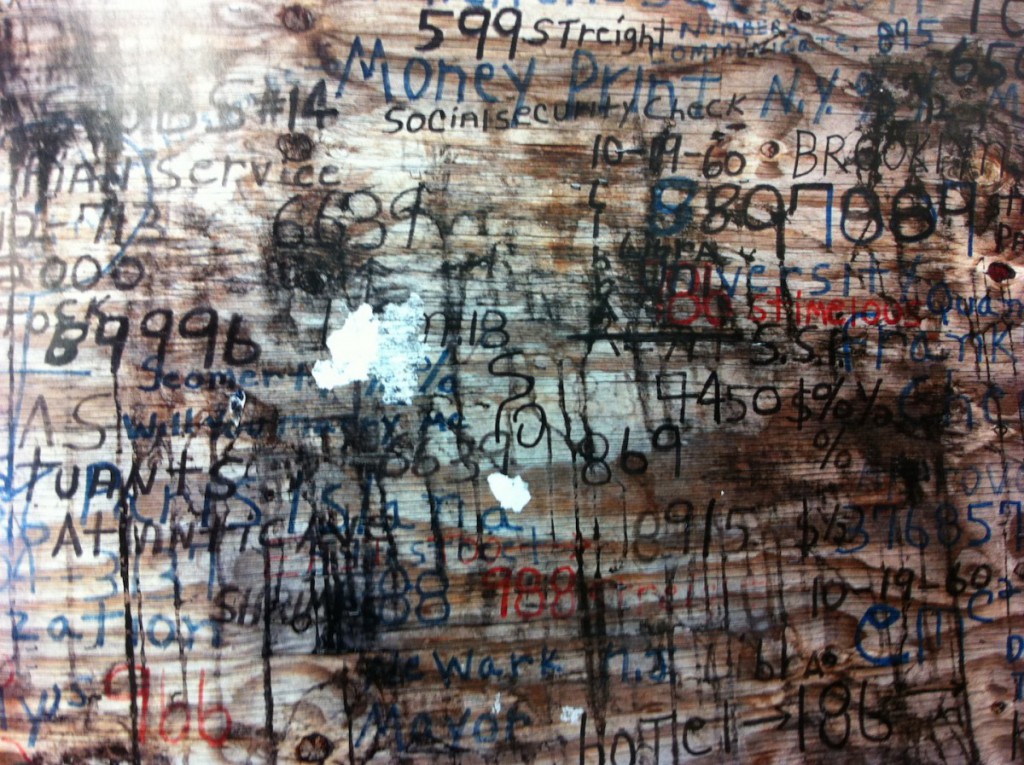Graffiti Project [legal]
Below is a graffiti project that Sean Scanlan created in 2011 for The Living Lab (where he was part of the first-year cohort). This project can be used by instructors in any field who want to try to engage with their students–and have their students engage with each other. Scanlan created it for a first-year faculty symposium; its purpose is to be cross-platform and multimodal and widely shared and distributed.
Public art has been around for a long time.
Public art is sometimes commissioned, sometimes it is not. Graffiti is used to transmit political, personal, and artistic statements with or without permission of the property owner. Graffiti is powerful because it is unsanctioned, but it is also uncomfortable for a street theorist/academic because it is both beautiful and illegal; indeed, what are the political stakes of studying this art form? If this art form is all around us in Brooklyn, why would scholars not study it? Our students see graffiti—tags, stickers, murals, advertising—in the place where they dwell. My interest in graffiti is in the way that it is a form of personal writing, a form of consolidating one’s identity. Writing one’s name on a wall says many things, but at the very least, it says: I exist.
Mark Noonan, Juanita But, and I have had the good fortune to be able to work with a local artist, José Parlá, who writes in his beautiful book JoséParlá: Walls, Diaries, and Paintings(2011), that:
Historically, walls have exhibited the voice of the people. My earliest paintings were made on walls at night. My thought and impulse behind the gesture was as primitive as that of cavemen marking and drawing in their dwellings to assert their existence in a place and time. As my works evolved, be it paintings, signatures, or even the documentation of these early ephemeral artworks throughout city walls, the works took on the nature of personal journals based on empirical experiences. The organized black books and photo albums also became my diaries. […] As a result, these works are time capsules, mixed documents of memory and research.”
José Parlá could almost be talking about General Education; Gen Ed is a process of mixing memory and research within (sometimes against) the maelstrom of the college student’s total experience. I have tried to turn both my fascination with Parla’s extraordinary art and my desire for my students to write what they know and what they need to learn into writing assignments. One such assignment involves their writing about themselves as a collage of information. The walls of Brooklyn have helped me with this assignment.
I have not been able to find out if this plywood fence is a found artwork photographed by Parlá, or if Parlá had a hand in it. Either way, it is a palimpsest of neighborhood signature–a local cryptography.
Then I saw this installation at the corner of Fulton and Adams–where a Shake Shack burger joint is going in. Here, on these black walls, the point is not to deface. Instead, the point is to put your own message next to your neighbors, to read other desires, to engage, to create a community “mixed tape” of memory and research and performance. Several times, I have added my own writing, my own tags, my own effort to say that “I exist” and “I live and work near here.” And I plan to go back often. I encourage you to take part in the performance of the “Before I die…” installation [editor’s note: the wall is now gone].
For the next 15 minutes, let’s create our own memorials to this seminar, to City Tech, to our own small groups, and even to our own identities.
Directions:
On this massive piece of paper, each group (or set of individuals) collaborates to make their own “Jay Street Jargon” using paint pens, markers, paint, pens, spray paint, chalk, and anything else available.
Rule 1: each writing must overlap another writing, even if only a little.
Rule 2: no erasing.
Rule 3: there are no rules in graffiti.
Questions:
1. Write down three academic words in your field that you hate. (vertical)
2. Write down three academic words in your field that you love. (diagonal)
3. Write down the your nickname in big, bold letters. (upside down)
4. Name your favorite teacher. (left handed)
5. Name your favorite moment in this seminar. (in a circle)
6 a. Write this phrase and fill it in: My job rocks cuz ___________________. (in all caps)
6 b. Doodle. (no shapes, just wriggly lines)
7. Write this phrase and fill it in: Before I die _____________________.
8. Who is your favorite artist? (backwards)
9. What is your favorite number? (then scratch it out)
10. Ruin at least two of the answers or writings on your wall that you like. (because)
11. Are you looking forward to the shared lunch with Karen and John? (in another language)
12. Favorite food? (inside a rhombus)
13. Doodle. (shapes!)
14. Write this phrase and complete: Where I’m from __________________!
15. Done…how do you feel?
——————————————————————————————————-
Sample Syllabi:
Scanlan-Course-Pol-ENG-1101-D365-Sprg2015








USA Soccer has definitely come a long way from being just a tiny little league team from Oregon that nobody really gave a darn about. Now the Eagles are one of the leading teams in the world. If you want to be a part of this incredible team then you need to start now. Find out more about the Eagles and get your own personal Insider Guide to the US Eagles. Then see what kind of crazy things the Eagles can do this season!